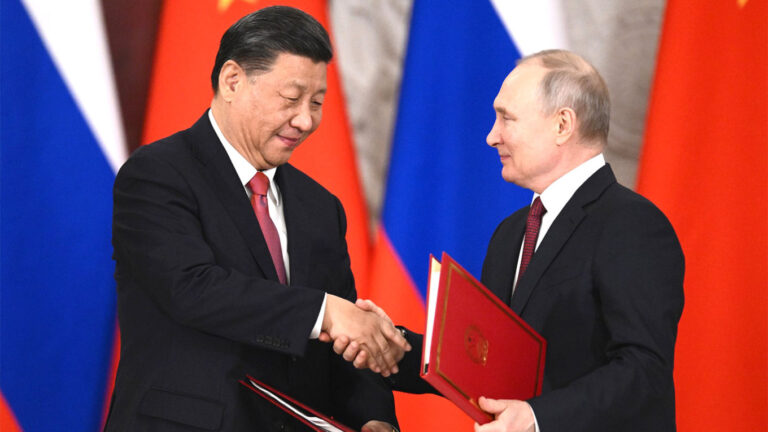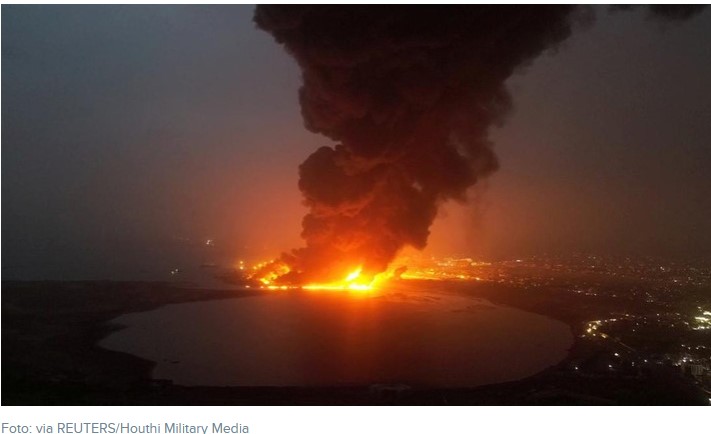
STRATEGIC ASSESSMENT. The Biden administration recently released its “Interim National Security Strategic Guidance.” The new strategy deprioritizes the United States’ counterterrorism efforts in favor of a geopolitical focus and inter-state competition among Great Powers, and has raised concerns about ensuring a balanced approach that does not disregard the counterterrorism successes of the last two decades. Seemingly buried in the document on page nineteen, it states: “We must adapt our approach to counterterrorism, including by aligning our resources to evolving threats.” This phrase captures the current zeitgeist in Washington — counterterrorism has been deemphasized and after nearly twenty years of fighting the so-called Global War on Terrorism, fatigue has set in. Put simply, it is clear that more pressing threats from adversarial states and geopolitical competition, against the background of a global pandemic and urgent domestic challenges requiring heavy investment, have diminished the focus on counterterrorism. The pendulum has swung back in the other direction, moving away from non-state actors and back toward nation states, the threat encapsulated by geopolitics, with countries such as Iran and North Korea, and great power competition (GPC) with Russia and China.
However, this is not, nor has it ever been, an either/or scenario. The United States must be able to conduct counterterrorism operations to address threats from non-state actors while competing with its primary nation-state adversaries. Moreover, the threats posed by terrorists and violent extremists are not always mutually exclusive from those posed by states, who may manipulate regional allies and proxies, a longstanding tradition in the history of warfare. Consequently, these are not two distinct choices, but rather complementary approaches as highlighted by Matthew Levitt and the Washington Institue for Near East Policy in a new report titled “Rethinking U.S. Efforts on Counterterrorism: Toward a Sustainable Plan Two Decades After 9/11.” Accordingly, considering counterterrorism and great power competition together forge a holistic U.S. grand strategy, one that I includes both hard power and soft power instruments in the policy toolbox.
As such, if one agrees with the assessment that China is the United States most pressing strategic concern for the foreseeable future, one can also agree that more resources should be allocated toward dealing with that challenge, and still believe that counterterrorism remains one of the United States’ most essential enduring mission sets. All of those things can be — and indeed are — true. Adversarial states themselves have also deployed a wide range of strategic approaches, including the appointments of their nationals in senior posts within international organisations, or investing in long term development projects and relationships with strategic allies.
Over the past two decades, the United States has invested massive amounts of manpower, energy, and financial resources to develop a comprehensive worldwide counterterrorism infrastructure. This includes tactical and operational innovations, world class intelligence, surveillance, and reconnaissance (ISR) capabilities, and enduring security cooperation partnerships with countries from the Sahel to Southeast Asia. The US also spearheaded a number of efforts in the international sphere, including an unprecedented and sweeping international legal framework through the UN Security Council and spearheaded the establishment of the Global Counterterrorism Forum, bringing together 29 countries and the EU to provide civilian capacity-building support to states. There is great risk in letting these capabilities atrophy. Most would agree that a regular reevaluation of budget allocations to counterterrorism, or any national security mission for that matter, is both warranted and necessary. After all, the Biden administration’s strategy document referenced aligning resources to threat, always a prudent objective. But the concern is that the threat assessment itself could be wrong, and thus the resources allocated insufficient, leaving the United States vulnerable to the dangers posed by a range of transnational terrorist organizations. By their nature, terrorist attacks are surreptitious, and the attacks of September 11, 2001 taught the United States that we need to be better prepared to respond to strategic surprise.
Al-Qaeda core has been weakened, but its regional affiliates worldwide still pose a threat. Several of its franchise groups have plotted sophisticated external operations over the past few years, including Yemen-based al-Qaeda in the Arabian Peninsula and al-Shabaab in Somalia. Al-Qaeda-linked jihadist groups have grown in strength throughout West Africa. Al-Qaeda terrorists in South Asia are watching events in Afghanistan closely. Similarly, while the physical caliphate of the Islamic State in Iraq and Syria (ISIS) has been destroyed, the organization is far from defeated. The ideology and persistent Islamic State cells remain a major threat, as do the regional ‘franchises’. Both al-Qaeda and ISIS are looking for opportunities to stage a comeback, ready to fill security vacuums that can result as Western military forces are relocated from forward operating bases to regional headquarters. Longstanding displacement camps with poor detention infrastructure or long-term plans for accountability, such as at al-Hol, only exacerbate this dynamic, expanding opportunities for radicalization, recruitment, or potential escape. Prolonged conflicts, increased insecurity, socioecononmic loss and anxiety, and less-governed spaces have long been known to create hospitable environments for terrorist groups; post-COVID and conflict conditions could enable these groups to regroup or new iterations emerge.
Furthermore, as the threat posed by transnational violent white supremacy extremist groups grows, it will be crucial to maintain existing counterterrorism liaison partnerships and intelligence sharing arrangements. This necessarily includes leveraging applicable lessons learned from the fight against jihadist groups to counter neo-Nazis and other far-right violent extremists. Several international legal and policy frameworks have been framed as “countering terrorism in all its forms and manifestations” and countries like the United Kingdom have demonstrated that counterterrorism measures can be agnostic, addressing a wide range of ideologically driven threats. U.S. partners and allies from Austria to Australia are struggling with the growing challenge of transnational violent white supremacy, so it behooves Western nations to engage in close cooperation, as they did to meet the threat posed by Salafi-jihadist groups, to tackle the plague of far-right extremism.
Recognizing the urgency of the threat posed by a rising China, a revanchist Russia, and an increasingly aggressive Iran and an assertive Turkey does not obviate the need to conduct counterterrorism operations and establish information and intelligence sharing partnerships. Indeed, two of the aforementioned countries lie at the seam of counterterrorism and great power competition. Russian separatists in Ukraine and the Houthis in Yemen are archetypical examples of the convergence of counterterrorism and great power competition. Both are well-trained violent non-state actors, backed by strong nation-states, equipped with high tech weaponry, including an array of sophisticated missiles. As recent conflicts in Libya and Nagorno-Karabakh have demonstrated, a reliance on violent non-state actors can be effective in tipping the balance of power. As such, this is a trend we’re likely to see more of in the future. Russia, Turkish, and Iran have each enjoyed varying degrees of success through the use of private military companies, foreign fighters, and sectarian militias, respectively. Working through these actors has become the preferred means of operating in many cases, relying on obfuscation and ambiguity while seeking to avoid direct escalation. While the U.S. national security bureaucracy haggles over definitions like gray zone operations and “hybrid warfare,” Moscow, Ankara, and Tehran are training, equipping, and deploying irregular forces to engage in asymmetric warfare, unconcerned about definitions and doctrine, but focused on securing their foreign policy objectives by any means necessary. Counterterrorism is therefore part and parcel to addressing geopolitical and GPC priorities.
Despite the growing chorus on “the Beltway” in Washington DC suggesting that counterterrorism is dead, the Biden administration must resist the urge to drastically shift gears in order to avoid an overcorrection. After two decades of a relentless operational tempo and pursuing terrorists in remote corners of the globe, fatigue is inevitable. Counterterrorism should not be a substitute for grand strategy, but neither should it be dismissed as a relic of years past. It remains an integral part of a comprehensive approach to U.S. national security and cannot be wholly divorced from great power competition. Terrorism is a tactic, and terrorist groups will not go away simply because we deprioritize fighting them. In addition, states can manipulate terrorist groups for their own ends in great power competition. We may be done with terrorism, but it doesn’t mean that terrorism is done with us (TSC).





